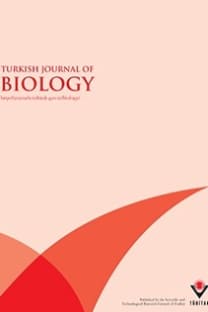Genotoxic potential of Cynanchum sarcomedium Meve & Liede coupled with its modulatory action on oxidative-stress?mediatedgenotoxicity by hydrogen peroxideNeethu Kannan BHAGYANATHAN*, John Ernest THOPPILCell and Molecular Biology Laboratory, Department of Botany, University of Calicut, Kerala, India
Cynanchum sarcomedium, genotoxicity, antigenotoxicity, H2O2, inhibitory activity
- ISSN: 1300-0152
- Yayın Aralığı: 6
- Yayıncı: TÜBİTAK
Sabina İoana COJOCARU, Miruna Silvia STAN, Mihai ANTON, Mihaela Rocsana LUCA, Gogu GHIORGHITA, Gheorghe STOIAN, Anca DINISCHIOTU
Murat Kemal AVCI, MUAVVİZ AYVAZ, HÜSEYİN UYSAL, EMRE SEVİNDİK, SEDA ÖRENAY BOYACIOĞLU, ÇİĞDEM YAMANER
Suchsismita DAS, Sunayana GOSWAMI, Anupam DAS TALUKDAR
Seher ERKUL KARAMAN, Zeki KAYA, Zeki AYTAÇ, Ayten TEKPINAR DIZKIRICI
NEELESH SHARMA, SIMRINDER SINGH SODHI, JEONG HYUN KIM, MRINMOY GHOSH, JIAO JIAO ZHANG, DEOG BON KOO, MAN JONG KANG, DONG KEE JEONG
WANXUE WEN, XIAOLING CHEN, DAIWEN CHEN, BING YU, JUNQIU LUO, ZHIQING HUANG
Maria Elena GONZALEZ, Marcela Fatima MEDINA, Sandra Maria Roxana KLYVER, Iris Maria AYBAR ODSTRCIL
Sasmita JENA, Kiran Dashart RASAL, Vemulawada CHAKRAPANI, Swagat Kumar PATRA, Shibani Dutta MOHAPATRA, Swapnarani NAYAK, Jitendra Kumar SUNDARAY, Pallipuram JAYASANKAR, Hirak Kumar BARMAN
NAYER MOHAMMADKHANI, REZA HEIDARI, NASSER ABBASPOUR, FATEMEH RAHMANI
GHULAM RAZA, KAZIM ALI, MUHAMMAD YASIN ASHRAF, Shahid MANSOOR, Muhammad JAVID, Shaheen ASAD
